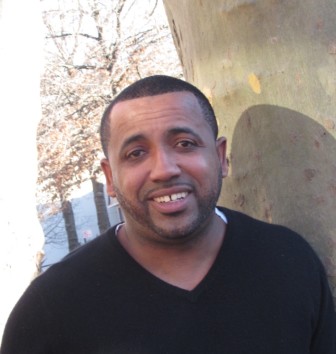 I work closely with young men of color in various neighborhoods in Brooklyn, New York, providing individual and group therapy. Much of that time involves listening to these men describe horrific situations regarding their own victimization, while providing them the tools they need to heal from their pain.
I work closely with young men of color in various neighborhoods in Brooklyn, New York, providing individual and group therapy. Much of that time involves listening to these men describe horrific situations regarding their own victimization, while providing them the tools they need to heal from their pain.
Needless to say, this is a challenging position that I am honored and privileged to be in. Being able to share in these young men’s healing and development, I feel a sense of responsibility to protect them from such an unsafe world. For a long time, I figured that my position as a therapist, which is bound by an ethical code put in place to protect my clients, would make it less likely that something harmful would happen to them and myself.
When I heard about the shooting of Charles Kinsey, a black male therapist shot by a Miami police officer, I felt shocked and powerless. I began to reflect on my career and identity as a black male therapist and my own mortality.
Throughout my time in this field, I’ve been told to be mindful of my safety when working with my clients. The messaging was framed to me and other helping professionals that those coming to our offices/programs were the threat if there was any. How do I make sense of what happened to Mr. Kinsey if the threat in that situation was not his unarmed and nonthreatening client with autism, but the officer with the gun?
Should I and other helping professionals of color shift our focus from our clients as the potential threat to police in position to protect and serve? How can I provide a safe space for my clients when the safe space has been compromised for the helping professional?
Charles Kinsey was shot while he and his client were on the floor and not posing a threat to the police officer. While on the floor, he relayed clear and concise information to the officer to show they were not a threat. So it seemed like this therapist’s word held minimal weight with the officer. His clear communication to the officer led to him being shot in the leg. When asked why Mr. Kinsey was shot, the officer couldn’t give much of an answer.
I have spent many years working in human services, and one thing I have learned is that every situation I am faced with is different. They’re different solely based on the fact that they involve different people who experience the world differently. The circumstances at times can be the same, but the individuals are not.
How can we protect and advocate for our clients in crisis when the police have demonstrated they are fearful of black and brown people? Even when those black and brown people are working to protect and support the same communities many of us come from.
After every group or individual session I have with the young men I work with, I give them a takeaway until the next time we see one another. Those takeaways are meant to keep them as safe as they can be, and they are usually coping strategies or mantras. After seeing what happened to Mr. Kinsey, I think I need my own mantra to keep myself safe until I make it back to my clients.
Kenton Kirby has a Master’s in Social Work from New York University. He provides individual and group therapy to young men of color who have been directly and indirectly impacted by community violence.

Thank you for your thoughts on this matter and for underlining the importance of the implications for helping professionals of color! Indeed, it gives us all something to think about very seriously. Where then, are we safe? Not at in the street, not at the job. God help us! Continue to watch over your people–keeping us safe within thy grace, Amen!
This article is thought provoking for anyone of color working with in the field of human services. How can we even answer these questions? What more needs to be done/said on this issue? Our safety is truly at risk. So sad.